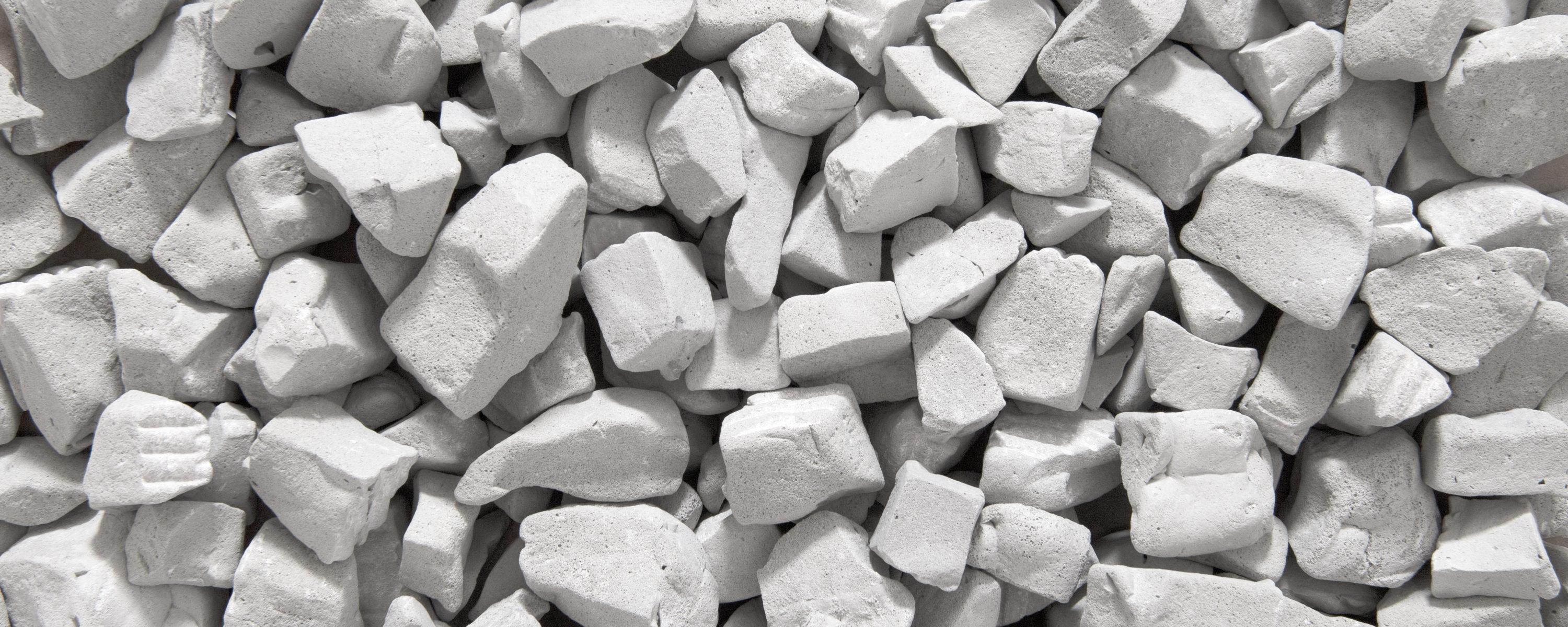 Use cases
Use cases
Foamit is a functional choice for a wide range of structures. For building construction applications, it is used as a lightening material and for thermal insulation. Foamit can be used for foundation and filling for inner areas like upper and intermediate floors, as well as rooftops, yard structures, frost protection and backfills.
Foamit is used as a lightening material for earthworks in applications like streets, roads, bridge embankments, sports fields, pipelines, retaining wall backfills, and yard structures. Foam glass reduces load on the subsoil and other structures in the environment, and also acts as a frost barrier.
Foamit’s permeability prevents water absorption from the subsoil into structures. This eliminates the need to use separate stone aggregate as a capillary break, which saves time and reduces workload. Depending on aggregate fragment size, the capillary rise height of Foamit is 100-200 mm. The ideal thickness of the layer is therefore 300 mm.
Foamit also insulates up to four times better than sand. A thick layer of foam glass can even be used as a substitute for EPS insulation. It’s also suited for a wide range of thermal and frost insulation applications, in addition to providing additional thermal insulation for, e.g., basement walls. In backfills, foam glass aggregate can replace manually installed frost insulation boards and also act as a drainage layer.
 Benefits and advantages
Benefits and advantages
Foamit is the lightest insulating material on the market, weighing just a fifth of the equivalent amount of earth and stone. This is a decisive advantage during transport, in storage and at the worksite.
Good stackability makes Foamit easier to handle in transport, storage and at the worksite. When brought to the worksite, the foam glass stacks without separate support structures and does not spread into the environment.
Foamit’s strong load-bearing capacity makes construction work easier and more efficient, because the aggregate can be walked over – even before compaction. It also forms a load-bearing and durable substrate for surface tiles, for example.
Foam glass aggregate is manufactured in Finland at Uusioaines Oy’s production facility in Forssa. The raw material used is recycled glass, which is purified through an industrial process to remove metal and other impurities.
In the manufacturing process, glass chips are ground to a powder of less than 0.1 mm and mixed with a foaming agent. The glass powder is heated to around 900 degrees Celsius, causing a near-fivefold expansion. The finished foam glass contains about 8% glass and 92% air by volume. Once cooled, the foam glass slabs are broken apart into aggregate, which is then crushed and sifted according to its intended use.
In Europe, foam glass aggregate has been successfully used in infrastructure and building construction for more than 25 years. The first foam glass factories were established in Switzerland and Germany in the 1980s. In the Nordics, foam glass aggregate has been used for infrastructure construction primarily in Norway, where it has been produced since the 1990s.
 Environment
Environment
Foamit is a safe and environmentally friendly choice for a number of reasons. Its carbon footprint is low and it is produced in Finland from 99% recycled glass that has been carefully sifted, qualified and purified to be suitable for production.
The non-combustible foam glass does not release toxic emissions into indoor air, nor does it break down into harmful solubles in the environment, so it can be used in groundwater areas. It is a part of the Nordic Ecolabel product database and meets the M1 emission criteria for Joutsen-labelled buildings and construction materials. Foamit is also fully recyclable: foam glass can be easily gathered from your site for reuse.
Read more about Foamit’s environmental friendliness and approvals.
 Purchase
Purchase
Foamit is delivered in an agile and considerate way, in terms of both costs and the environment. Foam glass aggregate’s lightness and stackability make it easier to handle, and more material can fit into a delivery, which reduces the carbon footprint. These same features are a benefit for storage as well.
Foam glass aggregate can be promptly and punctually delivered to your infrastructure worksite in 2–3 working days. Foamit 20 foam glass aggregate can be acquired in sacks from our retailers, and bulk orders over 20 m3 can be retrieved directly from Foamit’s factory.
Foamit is a techno-economically wise choice for both infrastructure and building construction. Foam glass aggregate’s natural lightness and stackability makes it easier to handle, more efficient to transport and saves time in construction. These benefits recur throughout all work stages, which reduces the project’s overall cost.
 Installation
Installation
Foamit foam glass aggregate can be easily installed on-site by blowing it into place. The installation phase does not affect other construction work because the material is transferred to the site with a blast hose.
Blowing the foam glass also saves time and reduces workload. It’s a fast method, compacting and compressing the foam glass. This gives it the load-bearing capacity to withstand walking on the site without the need for separate walkways or other support structures.
Read more about Foamit installation in infrastructure and building construction.
Foamit has a compactibility of around 10-25% in infrastructure construction, depending on the application and compaction method. Foam glass compacts when blown, allowing you to achieve a high–quality result in both infrastructure and building construction with less effort.
Another advantage is that after compaction, the aggregate layer is stable and long-lasting, which is a significant benefit for further work. Compaction may not be needed at all on cycling and pedestrian paths or if Foamit is used as an infill without load-bearing needs.
Read more about Foamit’s compactibility in infrastructure and building construction.
Glass does not contain crystalline quartz dust, as glass is an amorphous substance. Since foam glass consists of 99% recycled glass, the concentration of crystalline quartz dust in foam glass dust does not pose a safety risk.
However, it is important to note that foam glass can generate dust during installation. Like other dust, foam glass dust can irritate, for example, the respiratory tract, which is why dusting in installation should be avoided, and personal protective equipment must be used if dusting occurs.
As stated in Foamit safety data sheet, the following personal protective equipment is used when installing foam glass:
- a respirator with particle filter (P2) when working is dusty conditions
- safety goggles to prevent dust and splashes from getting into the eyes
- appropriate hand and skin protection to avoid mechanical abrasion that can cause irritation (note: foam glass pH 10.5)
You can find the Foamit material safety data sheet here: https://foamit.fi/en/foamit-products/material-safety-data-sheet/ “

 Contact us
Contact us